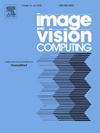HPD-Depth: High performance decoding network for self-supervised monocular depth estimation
IF 4.2
3区 计算机科学
Q2 COMPUTER SCIENCE, ARTIFICIAL INTELLIGENCE
引用次数: 0
Abstract
Self-supervised monocular depth estimation methods have shown promising results by leveraging geometric relationships among image sequences for network supervision. However, existing methods often face challenges such as blurry depth edges, high computational overhead, and information redundancy. This paper analyzes and investigates technologies related to deep feature encoding, decoding, and regression, and proposes a novel depth estimation network termed HPD-Depth, optimized by three strategies: utilizing the Residual Channel Attention Transition (RCAT) module to bridge the semantic gap between encoding and decoding features while highlighting important features; adopting the Sub-pixel Refinement Upsampling (SPRU) module to obtain high-resolution feature maps with detailed features; and introducing the Adaptive Hybrid Convolutional Attention (AHCA) module to address issues of local depth confusion and depth boundary blurriness. HPD-Depth excels at extracting clear scene structures and capturing detailed local information while maintaining an effective balance between accuracy and parameter count. Comprehensive experiments demonstrate that HPD-Depth performs comparably to state-of-the-art algorithms on the KITTI benchmarks and exhibits significant potential when trained with high-resolution data. Compared with the baseline model, the average relative error and squared relative error are reduced by 6.09% and 12.62% in low-resolution experiments, respectively, and by 11.3% and 18.5% in high-resolution experiments, respectively. Moreover, HPD-Depth demonstrates excellent generalization performance on the Make3D dataset.
求助全文
约1分钟内获得全文
求助全文
来源期刊

Image and Vision Computing
工程技术-工程:电子与电气
CiteScore
8.50
自引率
8.50%
发文量
143
审稿时长
7.8 months
期刊介绍:
Image and Vision Computing has as a primary aim the provision of an effective medium of interchange for the results of high quality theoretical and applied research fundamental to all aspects of image interpretation and computer vision. The journal publishes work that proposes new image interpretation and computer vision methodology or addresses the application of such methods to real world scenes. It seeks to strengthen a deeper understanding in the discipline by encouraging the quantitative comparison and performance evaluation of the proposed methodology. The coverage includes: image interpretation, scene modelling, object recognition and tracking, shape analysis, monitoring and surveillance, active vision and robotic systems, SLAM, biologically-inspired computer vision, motion analysis, stereo vision, document image understanding, character and handwritten text recognition, face and gesture recognition, biometrics, vision-based human-computer interaction, human activity and behavior understanding, data fusion from multiple sensor inputs, image databases.
 求助内容:
求助内容: 应助结果提醒方式:
应助结果提醒方式:


